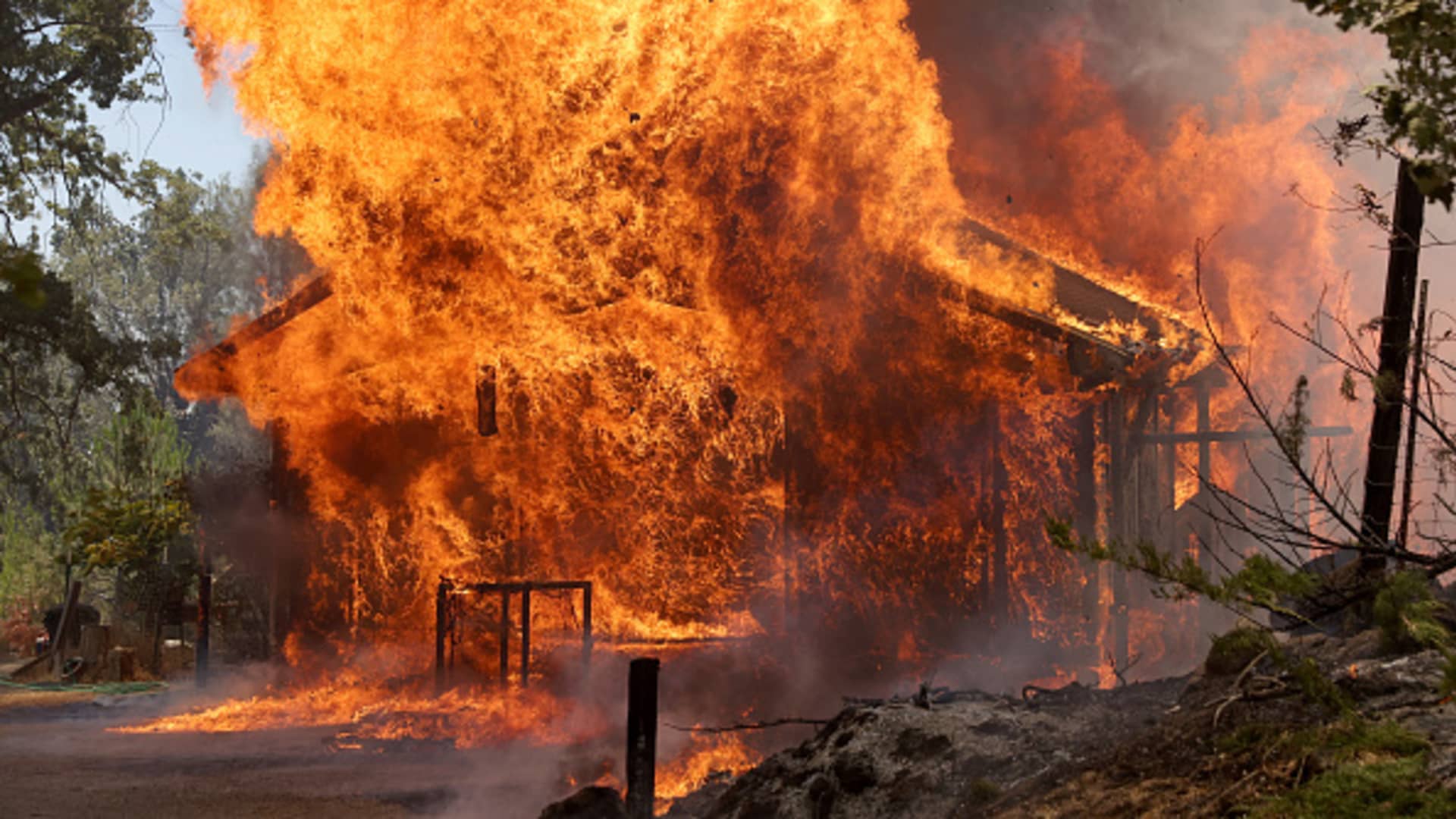Some insurance companies are pulling back coverage from fire- and flood-prone areas, leaving homeowners with limited affordable options. This trend may even affect the property value of American homes, experts say.
The nation’s largest homeowner’s insurance company, State Farm, stopped accepting new applications for policies on property in California in May. Allstate announced in November that it would “pause new homeowners, condo and commercial insurance policies in California to protect current customers,” the Associated Press reported in June.
This trend will likely continue across the insurance industry, said Jeremy Porter, head of climate implications research at First Street Foundation, a nonprofit research organization that compiles comprehensive climate risk data.
“They know the risk is just too high to be actuarially sound for their business,” he said.
In its announcement, State Farm said too many buildings are being destroyed by climate catastrophes, inflation is making it too expensive to rebuild, and it can’t protect its investments any longer.
More from Personal Finance:
Why a ‘death note’ is as important as having a will, advisor says
Economists say the labor market is strong, but job seekers don’t agree
Amid FAFSA delays, what to do if your financial aid letter is late
The problem is not just in California, where wildfires are prevalent. Louisiana and Florida homeowners are also contending with a lack of access to insurance, due to flood risk.
“Losses are increasingly related to climate risk,” said Sean Kevelighan, president and CEO of the Insurance Information Institute, an insurance industry association. “As that risk increases, so does the cost of insuring those assets that people have on hand.”
Even though there wasn’t an increase in major disasters in 2023, he said, the industry is still expecting to see $50 billion in losses just because of “severe convective issues” such as flash flooding and the implications of heavier everyday storms.
What happens when a homeowner can’t get insurance
Without insurance, many homeowners can find themselves in big financial trouble.
Darlene Tucker, 66, and Tom Pinter, 68, are longtime homeowners in Sonora, California. The couple bought their “dream home” 18 years ago and have been enjoying their retirement from their respective jobs in manufacturing.
Tucker also cares for her horses and a rescued 100-pound tortoise on the property, and runs a dog day care center to help make ends meet. She said Pinter also works as a delivery driver to help out.
The couple received a nonrenewal notice from Allstate in November. Tucker told CNBC she has been working with her Allstate agent to find another insurer.
“I had one company step up and said they’d do it for $12,000 a year,” she said — that’s roughly six times her previous annual premium under Allstate of about $2,000.
She said there was no way the couple could afford that new policy, and they would likely have to move.
But Tucker and Pinter may find that selling their home also comes with a steep cost.
Porter said First Street Foundation’s research in California concluded that “the moment that an individual gets a non-renewal letter from the private insurance market, they essentially lose 12% of their property value.”
Insurance costs ‘should be an alarm’ for homebuyers
Experts say the insurance landscape in California is particularly tricky because, in addition to the wildfire risk, the state has a law that adds extra approval measures, including board approval and review by the insurance commissioner, if an insurance company wants to raise the rate of insurance by more than 7%. That’s been in effect since the 1980s.
Kevelighan, of the Insurance Information Institute, said that law, called Proposition 103, creates a regulatory environment in California that restricts the industry from adequately including climate risk in its forecasting and is one of the reasons the industry is being forced to pull back coverage in the state.
“Risk management does not come into play until it’s entirely too late when it comes to individual personal property purchasing,” Kevelighan said. “It comes into play when the mortgage provider needs you to go get it.”
“And that’s the first time when a consumer even begins to think about where they’re living and what the risks might be,” he said. “The cost reflects that risk. That should be an alarm to tell them that they’re living in a risky place and then ask themselves: How could I reduce that risk? Or do I need to think about living somewhere else?”
‘Give me something to work with’
With just days remaining until Tucker and Pinter’s Allstate policy expires, on Feb. 15, the couple is still looking for more options. Tucker told CNBC that a recent quote they received was three times what they were originally paying, with a $10,000 deductible.
Of the whole situation, she said she feels frustrated.
“We’re doing everything we can,” Tucker said. “You know, we worked hard, we retired. We take good care of our house. I’m never late on my bills. I paid that [policy] for 18 years … And you just give me no choice. That’s the part that bugged me the most, I think. Give me a list. Give me something to work with. Raise [the price] if you need to, reasonably. But don’t just give me no choice. That’s not right.”
Tucker’s insurance agent from Allstate told CNBC that “most insurance companies are not currently writing polices in high fire prone areas,” and confirmed the company was trying to help her find other options.
State Farm did not respond to CNBC’s requests for comment.
Watch the video to learn more about why some American homeowners are losing their property insurance and the changes the insurance industry would like to see to be able to offset some of the mounting risks.
